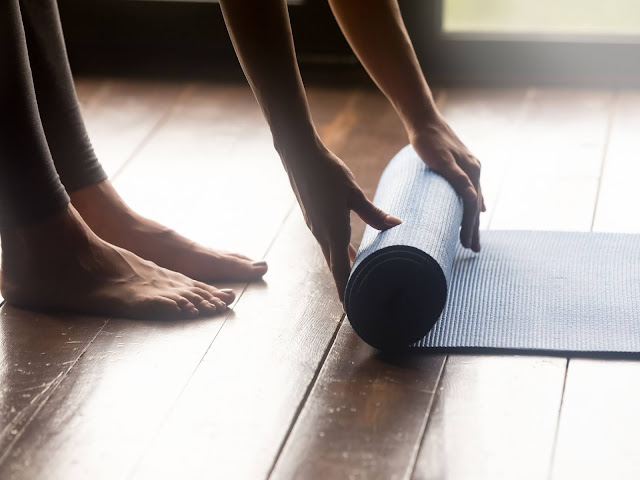Lately, I’ve been asked a lot of questions surrounding yoga and how to improve one’s practice. Do I have any advice for…? From how to start a yoga practice to how to have my body back after pregnancy to how to grow and improve flexibility and strength and make it easy, I’ve been asked it all.
As an instructor, the best advice I am able to give has always been the same: Listen to your body, play with your practice and use your breath.
I’ll run through each of these and then pull it all together with an example at the end so keep reading!
Listening to Your Body:
Whether you’re just beginning or a seasoned yogi, your body is always giving you feedback. It’s telling you when you’re approaching or at your limits (it feels like you’re straining and you’ll find your breath is tight or you’re holding it entirely). This is your body’s way of saying “no” which means we need to respect where we are at and play this. You’ll often hear this referred to as “your edge”.
Breathe In Breathe Out:
Once we’ve found our edge, we bring our breathing to the forefront. In many cases, our ability to breathe is our underrated hero. Because it happens so naturally and automatically, we hardly pay attention. However, our breath is one of the ways we can communicate back to our body. Unfortunately, speaking English doesn’t reassure it as much as we’d like it to (though some positive self-talk never hurts!).
Consciously using our breath is how we can reassure the body that it’s safe and help it to grow. It tells the body to release tension because a body that can breathe normally is a body that is safe. The added benefit is that the physical breath helps massage the body. Increasing the volume in our lungs is caused by the diaphragm contracting and moving down. The influx of air causes the ribs to expand and all of this massages the internal organs and increases blood flow.
In most asanas, finding your edge and using a conscious breath will allow you to soften into the pose. We release any tension and soften through the body and mind. This is the place where the growth happens.
Having fun and feeling good:
In yoga, we teach the asanas and how to add the breath to get the most out of your practice. But unless you’re having fun and it feels good, then it doesn’t really matter. I recently saw an interview with James Corden where he was discussing his choices in improving his health -- a change of diet and exercise. He stated that he disliked all exercise. As a yoga instructor where I help people move, this breaks my heart but it also makes sense. If moving doesn’t feel good in your body, there is no exercise that will be enjoyable to you. That’s why you so often hear instructors cue the pose and then say “find what feels good”. What we mean is find what feels enjoyable and happy in your body. It shouldn’t come with pain or staring but feel like growth and expansion. That’s what makes us feel good and when we feel good, we show up because we like the feeling. It makes it easy which is really how life should be.
Putting it All Together:
There’s no better teacher than experiencing something so let’s put it all together and see how we feel. Ideally, if I’ve done my job correctly, you’ll physically feel the difference!
Let’s take cat-cow for example. It’s a spinal warm-up common in yoga. We start on all fours with a flat back and check-in with the following alignment cues:
Stack the shoulders over the wrists
Hips stack over the knees
Navel and heart draw up towards the spine
Gaze is down
The Crown of the head reaches forward
Tailbone reaches backward
On the inhale, we lower the belly and take the gaze forward. The heart opens and we feel the stretch through the front of the body. Then we exhale and draw the navel and heart towards the spine. As we press away from the mat, we round through the spine like a cat on Halloween. We flow with the breath flexing and extending the spine.
Now, what if you want to work on more or a specific section of your spine (thoracic, sacral, etc)? Then, we play!!
Explore your cat-cow. Add a little extra movement forwards/backward or side-to-side. Find what feels good in your back. As you move, you’ll find both what feels good and the edge of your healthy movement. This edge is where we breathe. We find this space where our body says “not yet” and we breathe into it, showing up but staying soft. If the breath is flowing, enjoy it. Usually, after 3-5 breaths, your body will give a little more. You’ll feel it. If you’re holding your breath, ease up and find that place where you feel present and near but not at your limit, then breathe.
This is where growth happens. This little consistent effort is all it takes. Like water that flows and slowly but surely breaks down the rock, our breath does the same thing. Truly all you have to do is show up bit by bit and the rest will take care of itself. The sweetest part of this is that you’ll find this is true even off the mat. Come to your edge. Breathe.
This is the best advice I could give anyone no matter where you are in your practice. Listen to your body and breathe. Come to your edge and breathe. Show up and the rest will unfold.
You can visit Flow and Go Yoga to see what we're all about, or, I’m always happy to answer questions related to growing your yoga practice or your journey to feeling good.
You can contact me, Janice, at hello@flowandgoyoga.com


Comments
Post a Comment